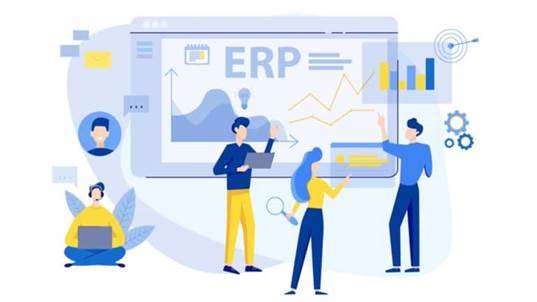Here, you’ll be using your understanding of automotive software development/engineering, programming languages, and other software systems on a daily basis. ASPICE, or Automotive Software Process Improvement Capability Determination in the automotive industry, is a set of industry standards and guidelines evaluating software development processes. If the idea of making an impact on a project lifecycle sounds appealing – from its inception down to testing and deployment – a career in automotive software development is worth considering. Each phase of the V-model aligns with the ASPICE standard and helps in clearly defining a life cycle.
Learn more about each of the six levels and how to ensure functional safety for each. SOTIF (ISO/PAS 21448) provides you with guidance on how to design, verify, and validate that your automotive software is safe and reliable. Motorcycle automotive software company standards for functional safety have become essential with the growing number of electronic safety systems for motorcycles. Learn about motorcycle safety integrity levels and how to comply with motorcycle functional safety standards.
Adapting Agile Principles for Requirements Engineering in Automotive Software Development
Cloud business intelligenceWe developed a BI software suite based on the microservices architecture and conducted data migration for a global automotive BI vendor. Itransition helps enterprises revamp their legacy automotive systems by providing selective improvements (UX/UI, functionality, or workflow reworks), running data migration, or completely reworking the software. We help automotive enterprises build more coherent and strong digital ecosystems by integrating their software with corporate or third-party products and services. Remains the main area of knowledge that allows you to create a variety of mechanisms, while the fundamentals of physics are still in force. In the coming years, 3D printing will be able to shift the very essence of manufacturing from mechanical engineering to direct software development. Agile is highly tolerant of requirement changes throughout the project lifecycle, but for a highly-regulated domain like automotive software, clearly, some boundaries need to be retained to ensure coherence.
- Technologies like robotic vision are used to detect road conditions, hazards, markings, and signs.
- Customized automotive application development with such integration would get you a highly advanced digital product as per your project scope.
- Also, selecting a technology partner should be treated carefully and seriously because it has a direct impact on the value and quality of the final product.
- Your in-vehicle experiences, traffic safety, and fleet solutions can benefit from combining our car telematics, cloud connectivity, and V2X technology.
Through AR/VR, we help vehicle agencies reduce the time-to-marketplace and the specified prices for designing & welding vehicles. Security is important to save you, hackers, from deliberately risking protection. Guidelines and work-in-development standards must be considered while growing a steady software program for automobiles.
Details and analysis
Most of the functionality is defined by the level of human-machine interface building as well as how it is implemented in software. Thus, the choice of the technology partner should be approached scrupulously and seriously, as it directly influences the quality and functionality of the end-product. Automotive software engineering is a link between software applications and the https://globalcloudteam.com/ hardware components of a vehicle. There is no single chip or system that can be supported either by the software or hardware, which is able to serve all required use models and user requirements for verification. Today, software is becoming more abstracted from hardware in the automotive world, and developers have an opportunity to take advantage of that architectural shift.

Development would go through discrete phases, with each phase being completed before the next began. Many of the development processes were manual, as were handoffs from one part of the toolchain to the next. It would take six to eight months for a new version of the software to emerge in that approach.
The Love-Hate relationship between Agile and Automotive
The technology will help drive the proliferation of autonomous vehicles and enable seamless communication between vehicles so that they can make instant decisions and improve road safety. Additionally, ASPICE does not specify any particular tools that need to be used but rather lays out the intended outcomes. In Agile methodology, similarly, tools are a secondary concern, with the focus rather on effective working practices and relationships.

However, as the automotive industry gets bigger, it is also getting increasingly complex. When it comes to revenue, the automotive industry is a true economic powerhouse. A mechanic can almost immediately diagnose a problematic component with the use of sophisticated automotive diagnostic software, considerably cutting down on labor hours and overall costs for the vehicle owner. Frequent vehicle maintenance is essential to avoid road accidents, having your automobile break down in the middle of nowhere, as well as to lower an owner’s annual operating costs. These systems are used by dealerships to manage inventory, sales, service, and customer relationships. Learn what automotive cybersecurity standards are unique to the United Kingdom.
Automotive Software Development: The Main Trends
At Indeema, we have an embedded team dedicated to helping you scale your automotive engineering services quickly, satisfy rising technology demands while reducing your expenses. We at this company are committed to employing agile methods to create reliable software and firmware. When you work with our automotive software engineering division, you’ll benefit from the knowledge of professionals with advanced degrees in computer science, analytics, electronics, and design. With a team-oriented, encouraging attitude, our digital experts will facilitate the best possible digital transformation.

As variability needs also to be handled in development artifacts, we extended Matlab/Simulink with Delta-Modeling techniques . A core Simulink model represents the base variant that is transformed to another variant by applying deltas to it. A delta contains modifications that add, remove or modify existing model elements. This way, features of an automotive system may be developed modular without mixing up variability and functionality in development artifacts [HKM+13].
Advanced Driver Assistance Systems (ADAS)
To develop any or all of this software, you need to hire dedicated developers with hands-on skills and better expertise in the automotive sector that could deliver you the final product as required with add-ons. And the amazing thing is we provide them all, from predictive maintenance to improved engineering, we are a one-stop solution for the software you need. As vehicles become more connected, they also become more vulnerable to cyber-attacks. Developing software to protect against these attacks is essential to assure the safety and security of the vehicle and its passengers. ADAS uses cameras, sensors, and other technologies to help drivers avoid accidents, maintain safe distances, and stay in their lanes. You can develop Automotive software for these systems to ensure accuracy and reliability.

After that, companies scrambled to develop tighter security and put teams in place to guard against hacks. As a result, software testing in the auto industry can look a whole lot different than software testing elsewhere. Quigley recalled a time when the marketing department at his company didn’t like the way a vehicle’s fuel-gauge pointer moved under certain kinds of acceleration. In his experience, it’s getting the hardware part right that is most difficult in the development process.